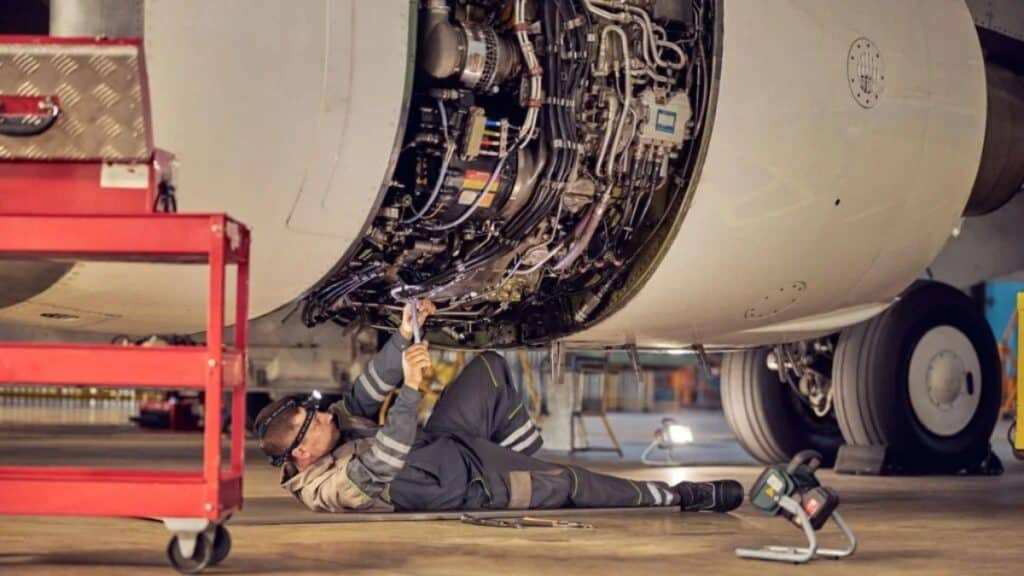Aircraft maintenance is the backbone of aviation safety, ensuring that every flight operates smoothly and passengers reach their destinations securely. With countless moving parts and complex systems, aircraft require meticulous care and regular inspections to stay airworthy. This article delves into the essentials of maintaining aircraft to the highest standards, highlighting why this field is critical and the practices that keep planes in the sky.
Why Aircraft Maintenance Matters
Safety in Aviation
Safety is the primary reason for aircraft maintenance. Proper upkeep prevents mechanical failures that could lead to catastrophic consequences. Every system, from engines to landing gear, must function flawlessly to ensure the safety of passengers and crew.
Regulatory Compliance
Aviation authorities, such as the Federal Aviation Administration (FAA) and the European Union Aviation Safety Agency (EASA), mandate strict maintenance protocols. Compliance with these regulations is non-negotiable, ensuring that airlines meet global safety standards.
Longevity and Efficiency
Regular maintenance extends the life of an aircraft, allowing it to operate at peak efficiency. By addressing issues early, airlines save on costly repairs and fuel consumption while reducing downtime.
Key Components of Aircraft Maintenance
Pre-Flight Checks
Before every flight, aircraft undergo pre-flight inspections to confirm their readiness. These checks include assessing tire pressure, fuel levels, hydraulic systems, and overall structural integrity. Although quick, they are crucial for identifying immediate concerns that could compromise safety.
Routine Maintenance
Aircraft follow a stringent schedule of routine maintenance checks:
- A-Check: Conducted every 400–600 flight hours, involving basic inspections and minor servicing tasks.
- B-Check: Performed every 6–8 months, focusing on more detailed inspections.
- C-Check: Conducted approximately every 20–24 months, involving thorough checks of most systems and components.
- D-Check: A major overhaul done every 6–10 years, requiring the aircraft to be taken out of service for weeks or months.
Unscheduled Repairs
Unscheduled maintenance addresses unexpected issues, such as wear and tear or damage caused by environmental factors. Quick response teams play a vital role in resolving these problems to minimize downtime.
Component Overhaul and Replacement
Critical components like engines, landing gear, and avionics undergo regular overhauls and replacements. These processes involve detailed inspections, ensuring each part meets airworthiness standards before reinstallation.
Tools and Technology in Aircraft Maintenance
Advanced Tools
Modern maintenance teams use advanced tools such as borescopes for internal inspections and ultrasonic devices to detect structural weaknesses. These technologies improve precision and efficiency.
Predictive Maintenance
Predictive maintenance leverages AI and machine learning to anticipate potential issues before they arise. By analyzing data from sensors and flight logs, technicians can schedule repairs proactively, reducing unexpected failures.
Digital Twins and Data Analytics
Digital twins—virtual replicas of physical aircraft systems—enable real-time monitoring and diagnostics. Combined with data analytics, they allow for more accurate maintenance planning and cost savings.
The Role of Qualified Personnel
Aircraft maintenance requires skilled and certified technicians. Professionals in this field often hold Airframe and Powerplant (A&P) licenses or type ratings specific to certain aircraft models. These technicians work closely with engineers and pilots, ensuring that maintenance tasks are completed to the highest standards. The collaboration between these teams is essential for seamless operations.
Challenges in Aircraft Maintenance
Complex Systems
Modern aircraft are equipped with sophisticated systems that require specialized knowledge to maintain. This complexity poses challenges for technicians, who must stay updated on the latest technologies.
Balancing Cost and Safety
Aircraft maintenance is expensive, and airlines must strike a balance between cost-effectiveness and uncompromised safety. Cutting corners is not an option, as it jeopardizes passenger lives and regulatory compliance.
Environmental Factors
Aircraft are exposed to harsh environmental conditions, such as extreme temperatures, high altitudes, and corrosive substances. Technicians must address these issues to prevent long-term damage.
Custom Industrial Turbine Solutions
Maintaining engines, including industrial turbines used in specialized aircraft, requires custom solutions tailored to unique operational demands. These solutions ensure optimal performance while meeting rigorous safety and environmental standards.
Case Studies: Examples of Maintenance Excellence
Preventing a Crisis
In one notable case, an airline’s routine inspection revealed a minor crack in the fuselage. Swift action by the maintenance team prevented what could have been a catastrophic failure.
Lessons from Neglect
Conversely, failures due to neglected maintenance underscore its importance. The 1988 Aloha Airlines Flight 243 incident, where fuselage fatigue led to a structural failure, serves as a sobering reminder of why maintenance must never be compromised.
Future Trends in Aircraft Maintenance
Drones for Inspections
Drones equipped with cameras and sensors are revolutionizing aircraft inspections. They can quickly and safely access hard-to-reach areas, reducing inspection times and enhancing accuracy.
Sustainable Practices
The aviation industry is adopting eco-friendly maintenance practices, such as recycling materials and using biodegradable cleaning agents. These initiatives align with global efforts to reduce the environmental impact of aviation.
Augmented Reality Training
Technicians are now using augmented reality (AR) to enhance their training. AR provides interactive simulations that improve learning outcomes and prepare technicians for real-world challenges.
Conclusion
Aircraft maintenance is a critical aspect of aviation that ensures safety, efficiency, and longevity. From routine checks to cutting-edge technologies, every detail contributes to keeping planes in the sky. By understanding and appreciating the rigorous standards of this field, we gain a deeper respect for the hidden heroes who make air travel possible. As the industry evolves, continued innovation and dedication to excellence will set the course for safer and more sustainable aviation.
